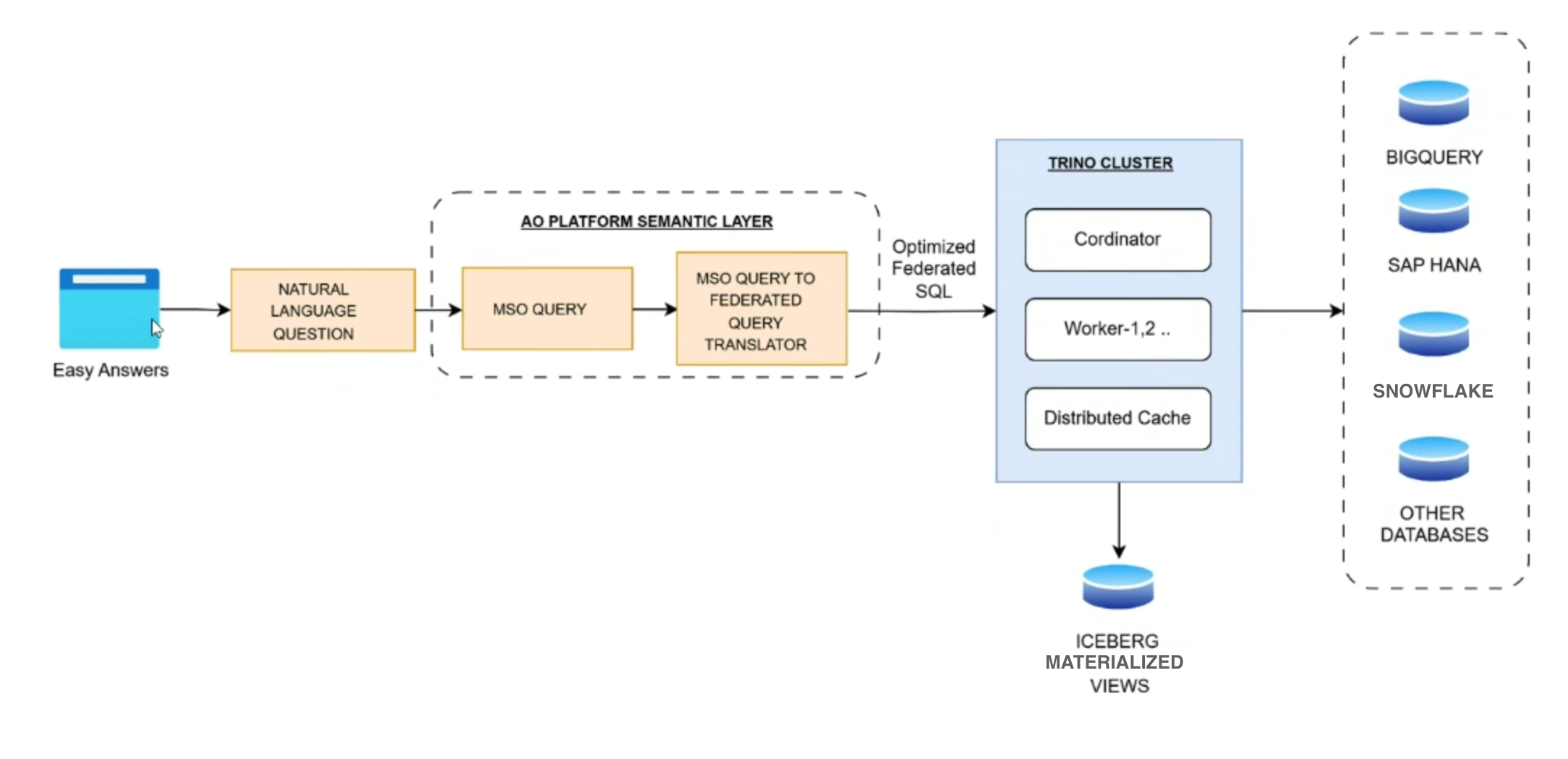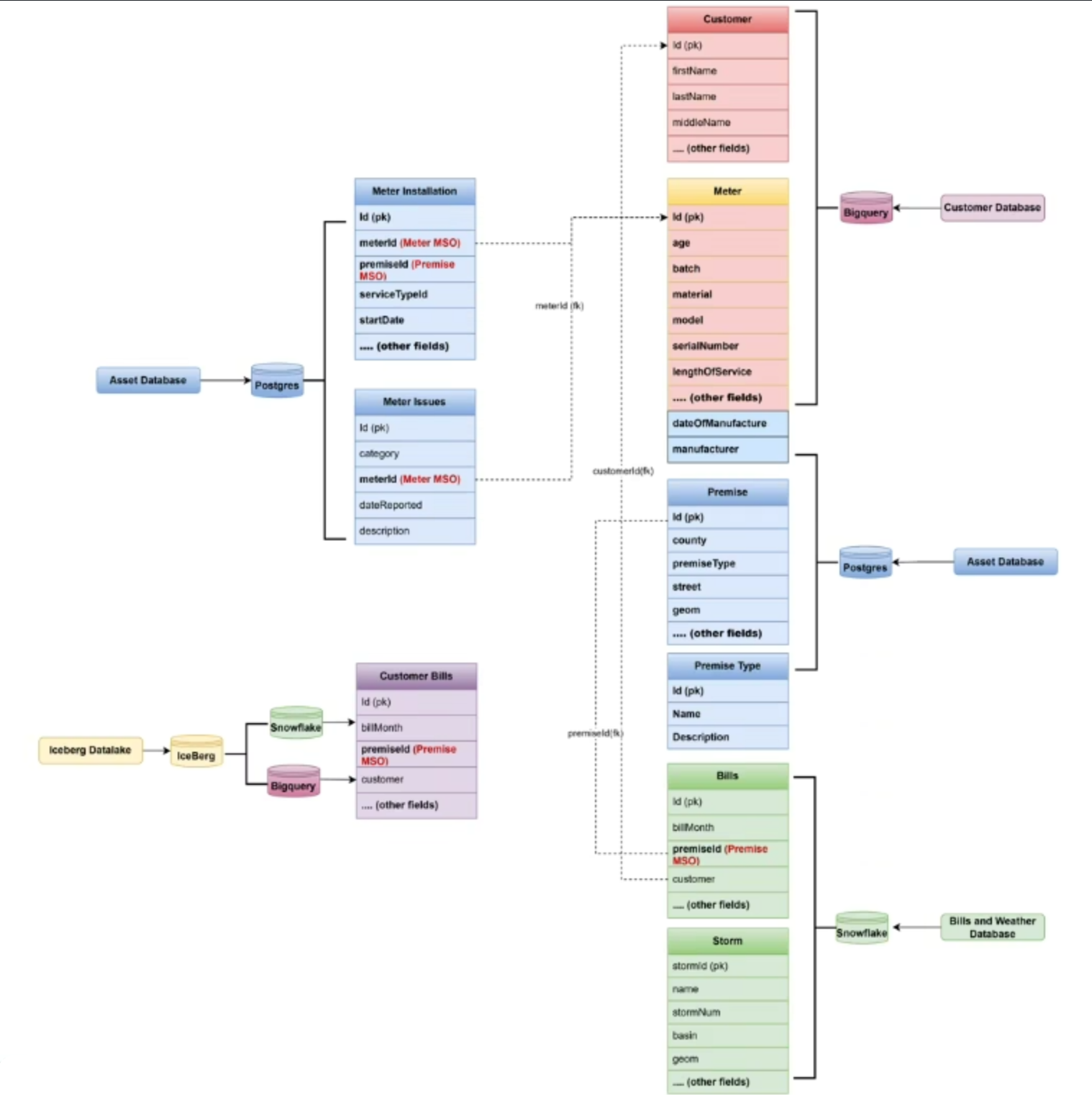Intended audience: end-users analysts developers administrators
AO Platform: 4.4
Overview
This section contains the details for configuring Federated access to Data Sources for the Ontology.
Federated Data Access allows a single data source connection to a federation environment to query one or more underlying data sources and perform join operations between them. This is particularly powerful when the underlying data sources are in different data source types. The AO Platform supports Federated Data access by integrating with Trino. Trino will connect to other data sources and perform the required data federation before supplying the data to the user interface components as needed. All data sources connected to Trino will appear in Trino as Catalogs.
The following diagrams show how a federated connection can retrieve data from multiple MSOs in an Ontology with connection to different data source types.
A simple illustration of how questions in Easy Answers get orchestrated and processed by the Federated Data Server, Trino, in a Federated Data configuration.

An example set of MSOs in an AO Platform ontology where each MSO is connected to different data sources, and some MSOs even have properties configured with different data sources.

The Federated Data page in the Ontology Composer provides all configuration options for establishing a Federated Data setup for an Ontology. There are five key configuration steps:
-
Federated Data - General - enabling, configuration, and testing of the Federation Server.
-
Federated Data - Cached MSOs - configuration of any high-latency, large data volume MSOs as Cached MSOs.
-
Federated Data - Materialized Views - configuration of advanced federated data queries as persisted Materialized Views.
-
Federated Data - Runtime Views - automatic storing of Runtime Views from federated data queries for faster retrieval during subsequent requests.
-
Federated Data - Data Load Jobs - configuration of scheduled data load/refresh jobs.
Also see…
-
Federated Data - Using Ontology Discovery on a Materialized View
-
Federated Data - Limitations and Other Considerations When Using Federated Data Configurations
Contact App Orchid | Disclaimer
